1. After a dry Cretan summer, the undergrowth in an olive grove starts to resurface with the cooler autumn weather. But there is heavy evidence of human activity - the land has been cleared of unwanted foliage by machine, which means that the natural landscape has been disturbed. New invasive species are also likely to have entered the area, brought in by the machinery, which was probably used on another field with possibly a different floristic synthesis.
Did you know that there are olive groves growing in the Mediterranean region that are hundreds of years old? The olive tree has proved to continue to be productive even at such an old age. Greece and Italy are currently working on a joint project dealing with the protection of their century-old olive groves, some of which are also found in Hania. The history of some of these olive groves dates back to the period when Crete was under Venetian rule. But the oldest olive tree in the world is believed to be located here in my home town: it is purported to be 2000-4000 years old, and it is still producing fruit!
2. What is believed to be the oldest olive tree in the world, still producing olives, found in Ano Vouves, Hania.
The range of flora in a century-old olive grove shows a remarkable resemblance to the Mediterranean ecosystem. By studying the micro-climate of a century-old olive grove, it is possible to come nearer to the conditions of nature as they may have once been in past times. This is why it is important to protect these century-old olive groves, especially since human activities have had a serious impact on them.
3a. Our olive grove stands at a height of 250m, and is about 60-65 years old. It is a nature lover's paradise in spring, with flowers and foliage of various kinds adding colour to the field. The trees in this grove were burnt right down to the ground over nearly 20 years ago due to an electrical line fault. Only a few stumps remained. Olive trees have a remarkable root system: the field rejuvenated without any human help (this field has never received any irrigation apart from rain water). Of the 200 trees that used to be cultivated here, my husband has now cleared 60 which provide us with half our yearly olive oil needs.
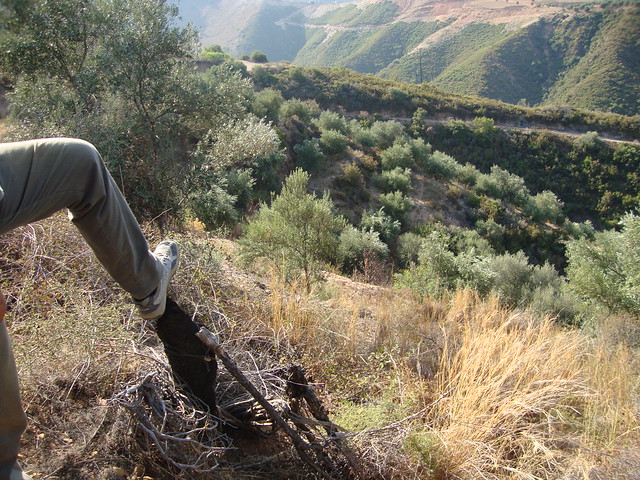
One of these century-old olive groves, in the village of Voukolies, Hania, Crete, has been studied for its species richness, abundance and diversity. The team of experts involved in this project included a local elderly, who has more practical knowledge than young people concerning the identification of edible plant species found in the ancient olive grove. Among the findings of the study, which was conducted relatively recently (in the past 12 months), it was discovered that, of the 98 plant species found in a 25x25cm experimental plot of land on the ancient olive grove (as observed in March-April of 2009 and 2010), many had aromatic or pharmaceutical values, while 27% were edible plant species and are still commonly being used in the local cuisine, a fact that is not surprising, since Cretans are well-known for their foraging skills. The fact that spring was chosen to conduct the study is not surprising either, as this is the time when the land on the island is at its lushest.

3b. The burnt stump in the photo below is of an almond tree. The position of this tree was once used as a marker of the field boundaries of our olive grove. Despite the damage that all the trees suffered in the fire, the olive trees all grew back - but the almond tree didn't, which show the remarkable ability of the olive to grow back after total destruction.
An interesting fact emerged when the results between Greece and Italy were compared: the level of biodiversity was greater in the Cretan century-old olive grove under study than in the Italian one, while the distribution of each of the plant species (as measured by the Shannon index) found on the sampled land was even greater in Crete.

4. This patch of land comes from our springtime garden. It's been tilled and turned, but edible weeds, which we still use in our kitchen, continue to grow in it. Click on the photograph to see the notes.
The edible plant species are all different kinds of plants commonly regarded as weeds. They are all used in pie mixtures and/or salads, while most are used to provide a distinct flavour or aroma in a dish. But the present-day importance of weeds cannot be underestimated. Weeds are currently being studied by many scientists to discover the properties they possess; in many cases, the compounds derived from them are inexpensive sources of 'added value'; they can be added in other more commonly consumed products to give them greater nutritional/pharmaceutical/health value.
Studies like these show how important the identification of weeds is to foragers and scientists alike. Most weeds are depicted in illustrated guides of plant species in their fully grown form, often shown with the distinctive flower that grows from them. This is a problem for the forager who is trying to identify an edible weed because edible weeds are picked well before the maturity stage, so that the leaves, and in particular the stalks, are young and tender. Not only that, but they are hardly ever in flower at this stage! Once they do flower, they are probably not edible, due to a change in their synthesis (eg nettles), or texture (eg amaranth), making them too fibrous, less tasty, or even more noxious.
5. The spinach seeds were sown randomly in our winter garden, making the leafy greens very hard to harvest amongst the weeds. This wasn't necessary after all, since most of the 'weeds' growing among the spinach were actually edible. Instead of spanakopita (spinach pie), I more often made hortopita (wild greens pie)! Click on the photograph to see the notes.
In order to identify edible weeds, the amateur forager needs to know what these weeds look like before they bloom. Furthermore, it must be noted that different weeds are in season at different times of the year; therefore, the range of edible weeds will differ across the seasons. Another problem in the identification of edible weeds is their names, which change according to the region where they are found: the same weed can have as many names as there are Greek villages!
6. Our olive grove is located at one of the highest points in the village of Fournes, Hania, after which the land is cultivated for anything, and is used mainly as grazing land. Therefore, the land is remotely accessible, and the level of human activity is lower here than in lower lying areas. This photo clearly shows the biodiversity of this rejuvenated field: click on the photograph to see the notes.
This is why it's hard to draw up a definitive list of edible weeds. It involves painstaking research, photography skills, seasonal visits to foraging areas, expert advice and scientific classification, to mention but a few of the factors involved in flora taxonomy. A number of projects are currently being conducted to name and describe the wild herbs of Crete. Hopefully, the results will be published soon: no doubt, they will be very popular, as there is a regenerated interest in this area, not just to save money, but to improve the quality of one's diet. In the meantime, here are a number of links I've found very useful in identifying wild greens in Crete. You will notice that some links aren't Cretan-based: this is because many of the same greens are found elsewhere in both Greece and other parts of the world.
- Kiki lives on the Greek island of Zakinthos, and she has many photos on her blog showing local wild herbs and greens, many of which are similar to those found on Crete - just remember that names change! She also made the effort to show these greens in their non-flower (ie edible) form (in Greek).
- Hanfranke lives on the Greek island of Aegina, and has compiled a list of commonly used wild herbs that grow on the island, all of which are also found on the island of Crete.
- Alexandros, who lives in Heraklion, Crete, showcases some of the local herbs, and mentions the Greek names in the recipe he gives for the pastries (in Greek).
- Dr. Kosta Oikonomakis lists the scientific names and uses of many wild greens used in the Cretan diet.
- The cyclamen website links up to photographs of the Cretan countryside, showing the foliage covering different areas, with the scientific names of the species found in each area.
- This plant index links up to photographs of plant species found in Crete, with their Cretan/Greek and scientific names.
- The School of Horticulture at the Technical Institute in Hania, Crete, has compiled a very good list of Greek weeds (no photos) with their scientific and Greek names.
- If you have access to scientific journals from ScienceDirect, you will find a list of common Cretan herbs in this link, with their scientific and Greek names (no photos).
- If I weren't lucky enough to live in Crete, I would like to be able to live in Pelion, the mountain range close to the Greek town of Volos in Central Greece. This site showcases pharmaceutical herbs growing in the Pelion area (in Greek), most of which also grow in Crete.
- Artemis Simopoulos discusses the benefits of wild Cretan herbs (no photos), with lists of scientific names and the uses made of each plant.
One important discovery of the study of the century-old olive groves was how widespread some invasive species are, particularly:
Oxalis pes-carpae L. (the most common plant family in the world)...
Oxalis covers our fields right throughout the cooler months (this photo was taken in our orange orchard). This plant provides a comfortable soft green coverage in the cooler seasons, but it also invades the habitat of other plant species, suffocating their root systems and depleting their supply. Tamus creticus, a highly prized wild Cretan green (the spindly plant being held in the photograph), is difficult to forage when its existence is threatened by invasive species like oxalis.
... and Galactites tomentosa Moench (the common thistle).
These plants (photo taken in our olive grove) are a nuisance because they grow prolifically and are hard to eradicate: see how sturdy the leaves of these dried dead plant stand - and they really are uncomfortable to the touch!
They are considered invasive species and tend to overtake areas where other plants had their natural habitat until the arrival of these 'outsiders'. In order to protect the biodiversity of the area, special consideration needs to be given to implement appropriate agricultural practices so that these species do not cause any further damage to the area by eradicating the weaker species.
It's just too easy these days to buy some herbicide and spray an area to kill the unwanted weeds, but that has produced another more sinister problem: Weeds are adapting to herbicide use and continue to survive and re-grow, despite being sprayed with herbicide. In another study conducted at MAICh (which hasn't been published yet), it was found that weeds of the Conyza species, in particular horseweed, have reduced susceptibility (while some are resistant) to the normal concentration of application of glyphosate*, a substance found in the globally over-used herbicide Roundup (a product of Monsanto, the world's leading producer of genetically engineered seeds). In other words, the amount of herbicide that used to be enough to kill weeds is now not killing them, and greater concentrations of herbicide are needed.
Glyphosate resistance (ie when weeds continue to survive and don't respond to repeated use of herbicide) is now becoming a widespread global problem because the herbicide concentration required to kill them continually needs to be increased, and eventually it stops working altogether; more and more countries are being added to the list of places around the world which show suspected resistance to glyphosate.
The next step would logically be that weeds (which have often proved to be useful nutritional elements in the diet) become completely resistant to herbicide applications: that's something to think about when we wonder what kind of world we are leaving behind to the next generation.
*In 1972, scientists discovered that application of glyphosate resulted in the inhibition of aromatic amino acid biosynthesis in plants; now you know why your (grand)parents keep saying that fruit and vegetables don't smell/taste the same as in the past.
©All Rights Reserved/Organically cooked. No part of this blog may be reproduced and/or copied by any means without prior consent from Maria Verivaki.
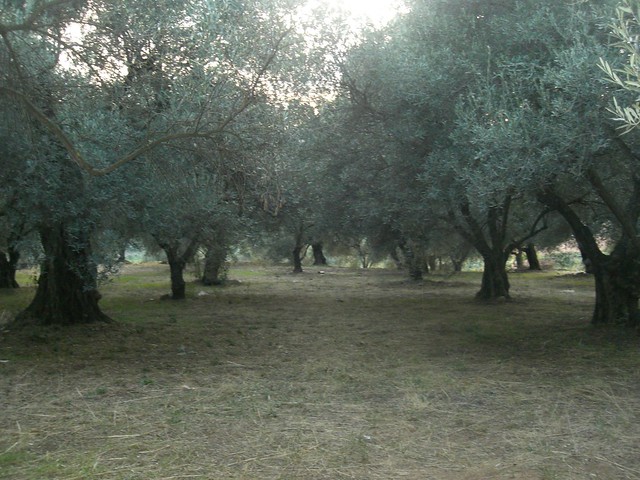
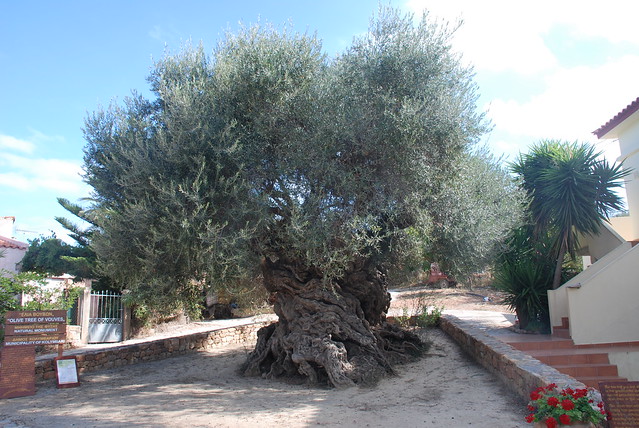
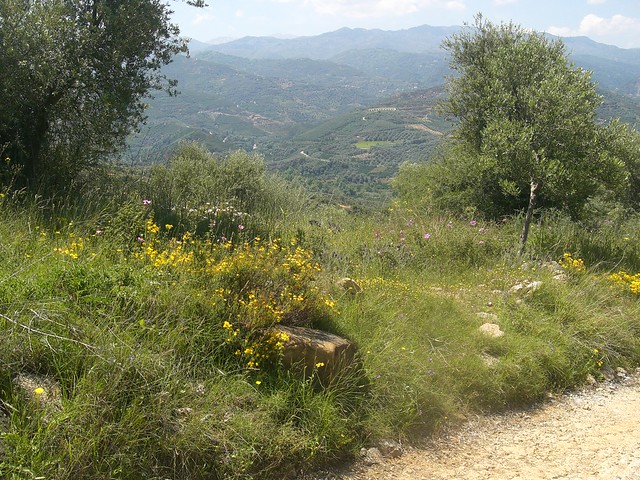

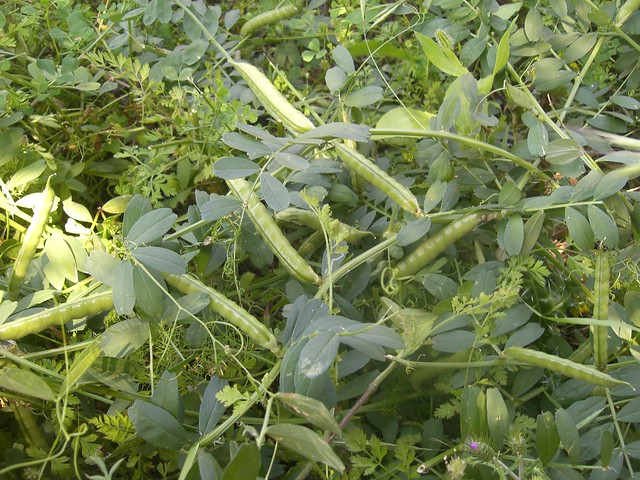

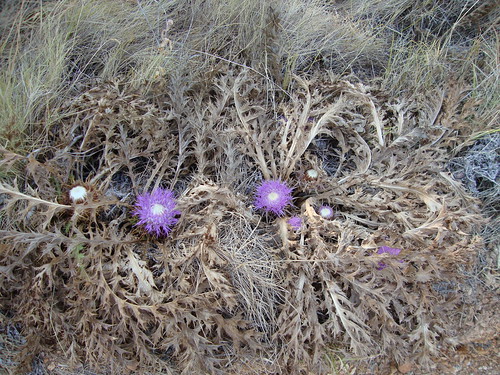

Πέρασα να σου ευχηθώ να περάσεις όμορφες γιορτές με τους αγαπημένους σου!
ReplyDeleteΧρόνια Πολλά!
Wow! A fascinating post, Maria. Your old olive grove is so beautiful. I would want to go there just to sit and gaze, feel the spirit of the land, maybe read a good book and have a simple picnic. Your information about common local weeds was very good. And, yes, the whole Monsanto thing makes me despair. We human beings are so stupid!
ReplyDeleteΜου'λειψαν τα άγρια χόρτα φέτος!!!! Πάντως να ξέρεις ότι αν ακούσεις του χρόνου ότι στο Βέλγιο συνέλαβε η αστυνομία μια τρελλή που μάζευε χόρτα -πράγμα αγνωστο εδώ- θα είμαι εγώ!!!
ReplyDeleteΚΑΛΑ ΧΡΙΣΤΟΥΓΕΝΝΑ ΣΕ ΟΛΗ ΣΟΥ ΤΗΝ ΟΙΚΟΓΕΝΕΙΑ!!!
I love wild greens and perhaps you'll show how to pick them one day! have a great holiday Maria!
ReplyDeleteOne of my favorite things to do when we're in Greece ... marvel at the olive trees. I think they are quite beautiful trees int heir own right.
ReplyDelete